
















Guiding a fledgling industry to become the largest fly-tying company in the world required long hours, a pioneering spirit, and a lot of innovative thinking. Fortunately, Tom Schmuecker was up to the task. The Wapsi Fly story began when Lacey Gee returned to his hometown in east-central Iowa from World War II and started a new fly-tying materials company. He named the company for a beautiful nearby smallmouth bass stream, the Wapsipinicon River.
Gee operated there from 1945 until 1973, when he sold Wapsi to an enterprising, college-educated young farmer named Tom Schmuecker and his wife, Ann. The Schmuecker farm had been breeding a high-quality strain of grizzly-hackled chickens and selling the feathers and pelts to Wapsi. When Gee decided to sell, Tom seized the opportunity. In 1978 Schmuecker read an article written by fly-fishing legend Dave Whitlock that described the enormous trout being caught in the waters of north Arkansas, and a visit to the area clinched it. Mountain
Most materials must be processed on site. Home, AK, became the home of Wapsi Fly, Inc., and it remains the perfect fit.


The demands of rapid growth quickly turned Wapsi into a family enterprise. Ann Schmuecker gave up her teaching career to play a critically important role in the company’s success. While raising four sons, she helped manage the business, including human resources and personnel training. It’s hard to imagine Wapsi’s rise to become the world’s largest fly-tying company without her invaluable contributions.
Tom utilized innovative thinking to design and repurpose machinery required to produce mass quantities of fly-tying materials. Wapsi’s first dyeing vat offers a case in point. It was a porcelain baby bathtub that held only 16 bucktails at a time. Today’s stainless steel vats were designed by Tom designed to dye 500 at once, and with more than 400 colors in their database, several are in constant use.
In 1987, just after completing a major expansion of their facilities, tragedy struck. It was the first weekend of October, and Tom was demon-
strating his fly-tying skills at the Southern Council Federation of Fly Fishers Conclave held annually in Mountain Home, when he learned of a massive fire at the Wapsi plant. One building was nearly a total loss, and smoke and water damage were significant throughout the facilities.
“A faulty fluorescent light fixture was responsible,” he said. “It was devastating, of course, but in that situation, we learned how valuable our employees, friends and family really are. They all pitched in and did whatever they could.”
Remarkably, a month after the fire, their loyal customers pushed sales up to one of the highest months in their history.
The misfortune had another beneficial outcome. The Schmueckers’ eldest son Karl, an engineering graduate of the University of Arkansas, returned to Mountain Home to help with the recovery. Eventually, he would become Wapsi’s general manager, applying the same creativity as his father to practical problem-solving. Karl has an encyclopedic
knowledge of all things Wapsi. He knows and understands the machines, processes, inventory and inner workings of each department, new materials and new products, and maintains relationships with those in related industries around the world.
Although Tom and Ann have retired, Karl remains the general manager, and the company is still a family operation. Brother Joe is the production manager and younger brother Eric, recognized as the family’s most talented fly-tier, also helps with the company. Their relentless promotion of fly tying, including many charitable efforts, is extensive. The impact of Wapsi’s generosity is enormous and ongoing.
For several years following Tom’s retirement, he spent over 60 hours a week at the plant. It was a labor of love. According to Tom, “A fair amount of that time is spent in my shop.”
That, of course, is where his genius was truly unleashed. One example was his inven-

There’s something special about fishing in Missouri. That unmistakable pink flash of a Rainbow Trout turning in the current, the red dots of a Brown rising into shallower water, the rush of a Largemouth striking the surface. You
cast a line anywhere, but you can only fish like this in Lebanon, Missouri. Make your next fishing trip count.


Winter is a perfect time to get outdoors with family and friends. Heading outside can be healthy and fun. A hike or scavenger hunt will entertain the senses. Help birds by making and hanging bird-friendly garland. Go eagle watching near open waters. If there’s snow, look for animal tracks. Take in some night-sky viewing, looking for meteor showers and constellations.





It’s time to capture memories, and Never Lose Touch.

For ways to reconnect with nature, visit mdc.mo.gov/neverlosetouch.


Preliminary data from the Missouri Department of Conservation (MDC) shows young hunters ages 6-15 harvested 2,881 deer during Missouri’s late youth portion of the 2022 deer hunting season, Nov. 25-27.
Of the 2,881 deer harvested, 1,302 were antlered bucks, 322 were button bucks, and 1,257 were does.








Top counties for the late youth portion were Lincoln with 82 deer harvested, Franklin with 65 and Osage with 52.

Last year’s harvest total for the late youth portion was 3,534, with 1,498 being antlered bucks, 390 button bucks, and 1,646 does.
“It’s typical to see quite a bit of variation in the number of deer taken during our shorter season portions, due primarily to the effect of weather on deer movement, the number of hours hunters spend in the field, or both,” said MDC Cervid Program Supervisor Jason Isabelle.





Isabelle noted that harvest totals for the late youth portion over the past several years have ranged from about 2,000 deer to just under 4,000 deer.
“This year’s harvest total was slightly below average, but that wasn’t unexpected given the rain that moved through portions of the state Saturday evening and Sunday morning,” Isabelle said.


For current preliminary harvest totals by season, county, and type of deer, go to the MDC website at https://extra.mdc. mo.gov/widgets/harvest_table
For harvest summaries from past years, go to https://short. mdc.mo/gov/4ZM.









































Meanwhile, archery deer season runs through Jan. 15. Find more information about deer hunting from the MDC 2022 Fall Deer & Turkey Hunting Regulations and Information booklet, available where permits are sold and online at https://short.mdc.mo.gov/4Tz.

• Wapsi Fly from page 2

tion of dumbbell eyes. Tom began by filling bead-chain eyes with solder to add weight to his smallmouth flies. That effort morphed into a summer-long process of creating masters to make molds for their manufacture.
New synthetic materials are introduced in the marketplace every year, and all must be handled, in some cases modified, and dyed in bulk. For example, every product must be packaged in the correct amount and then shelved in a









warehouse so that orders can be filled and packaged for shipping.

Wapsi has two separate shipping departments; one ships only to fly shops in the United States, while the other ships to over 60 foreign countries in every corner of the globe. A century ago, most fly tiers had to hunt, raise and dye materials. Today most of the incredible array of materials that fly tiers use have passed through this remarkable company.


















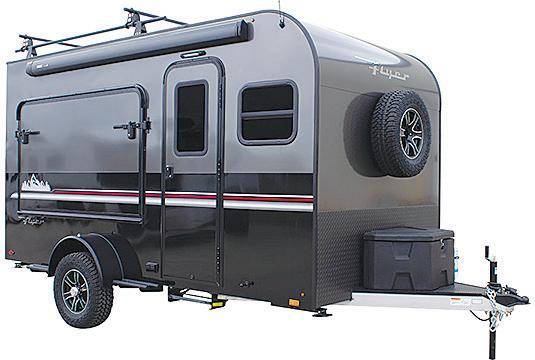







The sun has not yet topped the trees along the banks of the remote backwater pool. Your soft-bodied frog swings idly from your rod, poised to cast toward the edge of the reeds rising up through the slowly fading surface fog surrounding your kayak.
It’s 5:56 am, just minutes away from the start of the bass fishing tournament you entered earlier that very morning.
Many miles away from the tourney’s headquarters, where registration and leader boards are staged, you’re already checked in, your location has been filed through the GPS
on your app and hooked into a network of near-field communication devices linked together behind the console alongside your fishing kayak’s cockpit.
At precisely 6:01, wham! A huge largemouth bass decides to gobble down your frog for its ill-fated breakfast. Encrypting video codes of the images of your catch on the bump board lets you register your official entry within seconds.
A few minutes later and a couple of dozen miles away, your catch has been officially posted on the tournament leader board for all to see. Without ever showing up at the staging area, you’re participating in a Catch-Video-Release (CVR) fishing tournament … and, you’ve placed with a winning entry officially submitted virtually via a video app on your phone, and you can expect your prize money in the mail.
Welcome to the techno-era of online kayak fishing!
STARTED IN ‘72
The first catch-and-release contest was held in 1972 at the Florida Nationals. Despite an emphasis on conservation efforts, fish still had to be brought to weigh-in stations to register catches.
Besides the crudeness or limited conservation tactics, the sheer volume of time and staff needed to process, administer and track thousands of paper entries was incredibly cumbersome for officials and entrants alike.
In 2005, app technology was used to track entrants’ locations using GPS and cellular signals. Called BASSTrakk, the positioning system became part of the live coverage on ESPN and later bassmaster. com
Chad Hoover, president and founder of Kayak Bass Fishing, credits many of the advances in fishing tournaments to kayak angler entrants. Hoover recalls a conversation with Texas fishing guide Chris Martin, who wanted to “bring life back into the fisheries” by creating Catch-Photo-Release practices. Hoover was quick to pick up on the initials C-P-R, the medical acronym for resuscitation – and as an apt catch-phrase for emphasizing fisheries conservation.
It was used originally and exclusively for red fish tourneys in the Gulf Coast region, events that issued disposable cameras for recording catches. Entries were verified by processed photos sent to One-Hour Photo processing centers. The advent of digital cameras provided the next step in the evolution of on-line tourneys.
Hoover foresees videos as the “next level of security” based upon “proprietary ideas based on mechanisms in place” and developing technology that ensures fair competition. “Near Field Communication, GPS communications, encrypting codes into photos, conducting virtual, full-blown tournaments” are all in the future of on-line contests, he said.
Darren Amundson, co-founder/CTO/CEO of Fish
Donkey, is one of several fish tourney apps used to help organizations run a fishing tournament, including hosting, registering catches, real-time leaderboard updates and catch verification. Amundson says the future is in “making it easier to run your traditional tournament…allowing you to run a tournament in the palm of your hand,” and, he adds, “… making it better for the fish!”
Fishing Chaos uses the software that is fully configurable, the same software used for ONSTAR, etc., as it’s connected to larger platforms. “Expansions of its use mean tourneys with more spots,“ said Fishing Chaos’s John Calagaz.
The iAngler approach consists of two common components of on-line capabilities: a Web portal to handle all aspects of tournament management, and the Mobile Application used by participants and remote viewers for registration, catch log-in, live leader board posting, weather and messaging.
Besides state-of-the-art technology that allows tournament managers to select angler input fields of their choice, this same on-line technology can be used to monitor on-water species data in conjunction with, or in addition to, the parameters of a tournament.

Mike Christopher says
iAngler sees technology opportunities on many fronts.
“Reducing the amount of info the angler needs to enter will be augmented through photo AI systems that automatically give the weight, species and other information about the catch – all based upon AI advances in apps,” he said.
He cites sailfish tourneys where verification of species and other data collection is done without fish even leaving the water, and not based on weight or length.
Smaller but more efficient batteries will also affect the amount of technology that can be applied. “Batteries are the ball bearings of technology!” he said.
Hobie’s Morgan Promnitz sees future boat designs being influenced by on-line tournaments as well. He said the future will be: “a tournament-ready boat, balanced, feature rich but still simple enough that it allows anglers to rig accessories.” Promnitz envisions “making cockpits more functional in the most efficient way – the whole tournament thing evolving.”
Across the spectrum, online apps are making kayak angling tournaments more widespread and accessible while making the entire process simpler. It appears that the limits are as boundless as the technology.
Clearwater Lake & Webb Creek Park – Hwy H –Bring the family to camp, boat, fish, and unwind on crystal clear Clearwater Lake. This area of the lake is formed where Webb Creek and Logan Creek empty into Clearwater Lake. The lake is known for its crappie, catfish and bass fishing. Camping is available at Webb Creek Recreation Park; plus a full service marina with boat/wave runner rentals on site. Webb Creek Park features over 40 campsites, swim beach, playground, showers, picnic pavilions, boat launch, and more. Services are limited after mid-September but camping is still permitted. Call Webb Creek Marina at 573-461-2344 for marina, boat rental and campsite information or visit www.recreation.gov to make reservations.
Black River and K Bridge Recreation Area – K Hwy – Float, canoe, fish and explore the beautiful Black River. Enjoy swimming, camping and picnicking right on the banks of the Black River. K Bridge Recreation Area and Campground offers playground, showers, electric and comfort station, visit www.recreation.gov to make reservations. Floats (raft or canoe) can be arranged on site by calling Jeff’s Canoe Rental at 573-598-4555. A small general store is also available on site.
Gravel Bar – Hwy 106 to HH Highway- Fish, swim, camp and relax on majestic Current River. Great place to explore Current River. This area is often referred to as Cardareva by locals and is a favorite summer hangout. Primitive camping is available right on the river bank, camping is also available at the nearby School Yard with picnic tables, lantern hooks and fire pits. These sites are available on a first come basis. Bring your canoes, rafts and kayaks; a perfect day float….Powder Mill to Log Yard. Boat launch available.
Mill Recreation Area – Hwy 106 near Current River bridge Powder Mill reopened summer 2020. Camping is available with views of the river, picnic tables, fire pit and lantern hook. Reservations are not available. Powder Mill is a perfect camp base for day trips to area attractions like Blue Spring, Rocky Falls, Peck Ranch, Johnson Shut-Ins, Elephant Rocks and more. Wild horses are often seen in the fields near the bridge. The Ozarks offers countless options for family adventure.
Rocky Falls- NN Hwy- A cascading crystal Rocky Creek drops from the Ozark Mountains into a lazy pool which eventually winds through the Ozarks to Current River. A must see if you are in the area and fun for all ages. Wear non-slip shoes and use caution when climbing on the falls. Picnic tables provided.
Current River Conservation Area –Consists of 28,000 acres of state land. Deer, turkey, eagles, elk and a multitude of wildlife can be seen. UTV’s, ATV’s and vehicle traffic are welcome on miles of gravel roads and trails that wind through some 60+ food plots. Buford Pond, Missouri’s first fire tower, a 1926 log cabin and an earthen Fort Barnesville can all be found here. Buford Pond provides fishing and picnicking and is a favorite location of all. For hunting enthusiasts an unstaffed rifle and archery range are provided.

Current River Conservation Area is home to the Missouri Ozark Ecosystem Project, the world’s most comprehensive forest management study. This 100 year project spans over 9,000 acres.

Main park entrance located on South Road in Ellington, other entrances located off Hwy 106 and HH highway. Primitive camping is available. Elk viewing and maps of the area are available at the main park entrance.

Local Flavor – While in town you won’t want to miss the Reynolds County Museum. This Museum is filled with relicts from days gone by and the rich history of the Ozarks. Volunteers staff the establishment and are happy to answer questions; Open March-November, Tues-Fri, 10-4 or by appointment. Call 573-663-3233 for more information.

Want some nostalgia from a couple decades back; how about a drive in movie? One of only a few drive-ins left in the Midwest is located just south of Ellington on highway 21. 21 Drive-In opens in May with summer family favorites and offers movie events into the fall including Halloween and Christmas.
Scenic Highway 106 - This 26 mile drive between Ellington and Eminence is known state wide for its scenic views and beauty, and is especially a favorite in the fall. This section of highway is also home to the Trans-America Trail and sees many bicycle travelers from April-October. Bicycle enthusiasts say it’s one of the “toughest sections on the trail” and known for the steep hills & hollers.
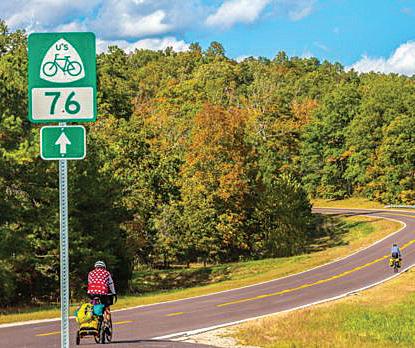
Blair Creek- Hwy 106 – This area is a favorite of the local’s spring, summer and fall. For the person who is looking for the unknown, adventure into the wild Ozark hills for the beautiful views, caves, swimming, picnicking. Here riding the back roads in ATV’s, UTV’s and 4-wheel drives is exciting and fun. Entrance located North of Hwy 106 across from Blue Spring entrance.

Ozark Trail- Hwy 106- Blair Creek & Current River section; Hwy 106 – Whether you are looking for a one day hike or want to make a few days of it; hiking these sections of the Ozark Trail is rewarding and adventurous. Such splendid locations as Rocky Falls, Klepzig Mill and Buzzard Mountain Shut-Ins are located right on the trail. For the adventurous visitor this is a must!
Peck Ranch- H Highway, Shannon County- Plan a trip for the fall to ‘Listen for the Bugle’! Elk are roaming the hills of the Ozarks and can be seen in Peck Ranch, Current River Conservation Area and the surrounding region. Thanks to the Missouri Department of Conservation’s Elk Restoration Program the herd has expanded to over 200 bulls, cows and calves. Peck Ranch and Current River Conservation Area is open from sunrise/sunset daily and offers a driving tour. Bugling occurs Sept-Nov. Check the MDC website for park closing details. Maps are available at the park entrance.
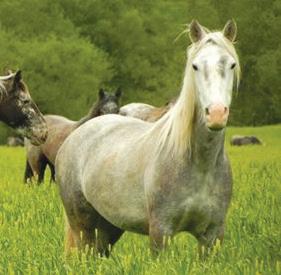

While in the area be sure to visit Black River in Lesterville, Johnson Shut-In State Park and Elephant Rocks State Park.



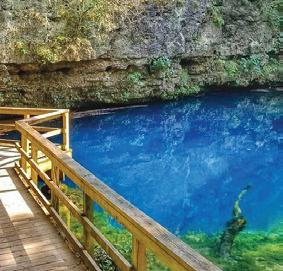


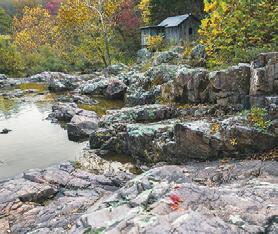
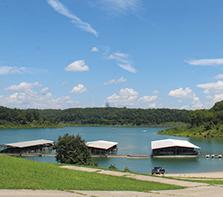
The past year is one I’ll never forget. I couldn’t if I wanted to. It delivered a wide range of ups and downs. Some of those downs were really tough. But the ups – well, the ups were remarkable. I didn’t travel to hunt and fish nearly as much as in years past, but staying close to home never felt so good. I’ll always look back on 2022 as a true turning point in my life.
I’ll spare you the downs, but I’ll share a few of the ups. My youngest daughter, Annabel, killed her first turkey. She took advantage of her last opportunity to hunt Missouri’s Youth Turkey Season. She was fortunate to take a bearded hen. I had been fairly confident that Annabel would never be a hunter. I couldn’t be happier to have been proven wrong.

A
AGould’s turkey hunt in Chihuahua, Mexico ended my quest for the World Turkey Slam. I shot my first turkey in Montana 20 years ago. Since then, I’ve bagged gobblers from New York to the Yucatan Peninsula, collecting all six subspecies. I’m waiting on the Gould’s to be finished at the taxidermist. He’s the last of the complete slam I’ll add to my collection of full body mounted turkeys in my house.
I bought a new farm. It’s only 40 acres, but it’s the right 40 acres for deer hunting. I shot my biggest buck ever off the place in 2021, and this year, just after signing the closing papers, I followed up with another solid 8-pointer. This beautiful piece of dirt has me enthused about restoring a 20-acre prairie, building a 3-acre lake, and learning how to plant corn so I can leave it standing through the firearms season and into winter to feed the critters. This agricultural playground has my head spinning on how to create the best deer habitat possible on a small acreage.
As the New Year arrives, I’m looking for-
ward to calmer waters and making the most of easier sailing. I like to know where my ship is headed, so resolutions have always appealed to me. But resolutions aren’t worth making if they’re not realistic. Make resolutions you can attain if you work hard enough.
For me, I need 2023 to open up more travel opportunities than the previous year. I’ve fallen behind on my quest to hunt every state before turning 50, so the next 12 months are going to be a period of making up for lost time. Therefore, I resolve to knock six states off my 50 in 50 by 50 list in 2023.
This means I’m not going to be able to waste any time. I’ll get started in New Jersey with my good friend and one of the most inspirational men I know, Will Jimeno. Will survived the World Trade Center collapse. He was pulled from the rubble, badly injured. We’ll be deer hunting Jersey’s late archery season.

An invite from a special friend to hunt sika deer in Maryland is planned in coordination with an accompanying hunt in Delaware. We haven’t decided what we’ll hunt yet, but I’m thinking a sea duck hunt in Delaware Bay sounds pretty cool. Sticking with waterfowl, I’m planning a duck hunt in the Sacramento Valley of California next December and hope to drop a few of the pintails the Valley is famous for.
A big game hunt in Idaho, Utah, Nevada or Washington is dependent on drawing a tag. I’m hopeful one of those lotteries will pay off. If not, small game and predators will become my prey. A ruffed grouse hunt in New England is another possibility, as is a river trip squirrel hunt in West Virginia.
Nothing is more enjoyable for me than hitting the road with a hunting or fishing trip waiting for me at the end of the line. I’m grateful for the time I had in 2022 to re-center my life, but now that the balance is in place, I plan to spend a lot of window time reflecting on where I’m going. Leaving the past in the rear view, right where some of it belongs.
For more Driftwood Outdoors, check out the podcast at www.driftwoodoutdoors.com or anywhere podcasts are streamed.
It ended up being a successful 2022 deer season for me here in Missouri. I harvested a nice 8-point buck on the opening day of the November firearms season.
He wasn’t a trophy, but he was the first legal buck that I’d encountered on the property in quite some time.
In fact, a lot of deer hunters in the state were successful during the opening weekend, probably due to the sub-freezing temperatures that had the whitetails on the move.
The MDC would later report that Missouri hunters harvested over 197,000 deer during the November portion alone.
To be honest, I wasn’t overly optimistic about my chances. In early October, my landowner hired a crew to go into the overgrown field that bordered the 20-acre wood lot, to clean it up to make it more appealing for potential buyers.
Utilizing brush-hogs, the crew was able to clear out much of the red brush, briars, and young cedar trees that had overtaken the five-acre field. While the crew was finishing up, one of the members found a trail camera on the ground near a fallen cedar. They also came across a small food plot of turnips.
When the landowner called to let me know they had found my camera and wanted to return it to me, I informed her that I didn’t own one. I then jokingly suggested that I was too cheap to buy one.
When the food plot was mentioned, I assured her I had never planted anything out there. Not that she would have cared, but this was troubling because I was the only one with her permission to hunt that property. She then told me that she would have the crew place “No Trespassing” signs along the fence line surrounding the field.
In late October I drove out to the property to tidy up my ground blinds and clear some shooting lanes. While checking the perimeter of the property for buck rubs and other deer activity, I discovered the signs missing. One of the yellow signs had been ripped from the fence post and torn into small pieces before being scattered onto the ground. Was our trespasser angry because his trail camera and food plot had been uncovered?
I then drove into town and purchased some new signs from a local hardware store before returning to the property and posting them. Afterwards, I notified my landowner about the situation. She pulled the SIM card from the trail camera and was able to download a dozen images.
One of them had our trespasser, dressed in his full camouflage, walking across the food plot. She wasn’t interested in prose-
cuting him at the time but would retain the camera and SIM card in case the Department of Conservation had to be brought in later. There were also some images of a couple of mature does feeding at the plot the day before the field was cleared. The landowner didn’t recognize the individual from the pictures but concluded that our trespasser was likely a local resident and a bowhunter.
So here was my predicament – I usually hunt with a handgun because I love the challenge, but I reckoned that I may be dealing with an aggressive trespasser. And since people can be downright ornery these days, I wanted a little more firepower than my single-shot TC pistol.
Normally I go into the woods to find solitude, not to pick a fight, but as I mentioned earlier, some people can be rather ornery, especially when they’re armed, so I’d feel much better carrying a rifle.
I had recently put a new scope on my bolt-action deer-rifle but had not yet sighted it in. Because I planned on hunting with the handgun this year, I was in no rush to do so.
A lesson learned: Always Be Prepared! .223 IS QUITE CAPABLE
Several years ago, when I discovered my sons enjoyed target shooting and were considering military service after high school, I purchased an AR-style sporting rifle in .223/5.56mm.
The DPMS Panther Arms Sporticle is a basic M4 design. This model is set up for an optic, so I mounted an inexpensive Bushnell rifle scope on it. It wasn’t long before this firearm became the most accurate in my little arsenal. It was also the most fun and inexpensive to shoot.
Here in Missouri, if you limit yourself to 5- or 10-round magazines, the AR is legal for deer. I own both 5 and 10 rounders. I was also fortunate enough to have a couple of boxes of Winchester .223 power-points on hand. The 64-grain jacketed soft-point bullets are designed for medium-sized game such as deer and antelope. At 3020 fps from the muzzle, the little projectile produces nearly twice the kinetic energy as the .357 magnum from my TC handgun.
Fortunately, I never crossed paths with our trespasser. As for my buck, about an hour after daylight he moseyed to within 50 yards of my blind. I watched as he nosed around a pair of scent-wicks dripping with doe estrous that I had hanging on some saplings near a scrape. Upon seeing that he was a shooter buck, I made a good shot. The 2½-year-old, 150 pound deer dropped like he’d been hit with a 30-06 and expired within the matter of a minute.
During field dressing, I discovered that both lungs had been shredded by the little projectile. My conclusion is certainly not a new one; it really does come down to shot placement, and the .223 with the right bullet is certainly capable for close-range deer.
Like many people in their 70s, I sometimes yearn for the good old days. Life was so much simpler then, especially when it came to my favorite pursuit, fishing.
We didn’t have specialty rods or reels for each type of fishing, hundreds of choices of lures, electronics that would do everything except reel the fish in for you, and YouTube videos that explained about every technique in the book.
We didn’t know what a professional fisherman was. The sages we relied on for information were the old guides at lakes we visited and the guys who ran the old musty bait shops where we shopped.
When my dad and I went fishing, we traveled light. We each had a favorite rod and reel, we stopped for a coffee can full of night crawlers on the way, and we made sure we had plenty of bobbers, hooks and sinkers.
We fished for whatever would bite. We didn’t go bass fishing. Or crappie fishing. Or walleye fishing. We were generalists. We didn’t know what we didn’t know.
We weren’t exactly like Andy and Opie heading to the fishing hole during the old Andy Griffith TV shows, but we weren’t far off.
Fishing was a big mystery back in those days. We didn’t have machines that showed us where to fish. We learned through trial and error that we
could catch crappies along the weed edges, walleyes near the bubbler and bass along wind-blown banks.
We also learned that when a storm was rumbling off in the distance, we’d better stay out there as long as we could, because that’s when the big walleyes went on a feeding tear.
We were city folks who loved being in the Wisconsin wild. It was an escape, an adventure, a chance to get out in a boat and forget about everything except fooling the finned creatures below.
Things were so simple in those days.
We didn’t have a boat that was specifically for fishing, trolling motors or high-dollar equipment endorsed by the pros.
We had an anchor that I had to drop and lift many times in good-looking spots and an old Johnson motor to chug us across the lakes to our favorite spots.
Times have changed.
My dad and grandpa would get a kick out of the way I fish now. I have an aluminum bass boat, a locator with everything from side-scan to GPS on it, a 100-pound thrust trolling motor, and so many rods and reels that I can’t count them all.
I experiment with the latest lures and techniques, and I get excited when that translates into more fish.
There’s no doubt that I am a much better fisherman than I was years ago. But still, I often yearn for the days when things were so simple.
Maybe it’s just my memory, but it seems like we took more time in those days to enjoy our surroundings and revel in nature.
We didn’t have our faces glued to the screen of a fish finder; we could take time to enjoy the deer at the back of a cove, the mallards that would explode out of a backwater area, the moose that would

feed in the shallows.
One of my friends once told me when we were deciding who to hire as a guide on one of our Northwoods trips, “Tell him we only care about catching fish; big fish. We don’t care about seeing bears or moose. We’re not interested in sightseeing.”
I reminded him how wrong he was. Yes, we wanted to
catch fish, but that was only part of the overall experience.
Fishing isn’t all about the catching. That’s why I I love float fishing in the Ozarks so much.
It’s a throwback to simpler times. Just an old canoe or johnboat, a couple of rod and
reels, a handful of lures – and little in the way of modern technology.
Don’t get me wrong. I’m not ready to ditch the modern conveniences of fishing. I’d much rather use my big trolling motor than a pair of oars.
It’s just that I realize the good old days had plenty to offer, too.


Don’t let the pretty little white flowers and bright berries fool you – winter creeper is a killer. Last fall, while patrolling the woods behind my house in my pursuit of invasive honeysuckle bushes, I remembered a conversation about another plant too green for November.
Carl Hof had his own battle brewing with an invasive plant that he said is killing trees on his property and in many places near his Eureka, Mo. home. As its name implies, the evergreen vine grows all year long.


The 66-year-old retired general contractor is not a weekend warrior like me – someone with a personal vendetta against honeysuckle bushes but no real expertise. Hof actually has a forestry degree from the University of Missouri and has taught dendrology, the taxonomic identification of woody trees and plants.
“Honeysuckle and most other invasive plants do not attach
themselves to native species and do harm,” he said. “Vines like Virginia creeper and poison ivy are not parasitic. But when winter creeper takes hold of a tree, it will kill it. It is an absolutely awful, invasive pathogenic vine.”
As the vine grows up a tree, it attaches itself with thousands of tiny root-like shoots, digging through the bark and feeding itself from the tree. Small by comparison, with a woody stem that’s barely an inch around, it can destroy a giant hardwood tree in a short time.
“There was a three-foot (in diameter), really strong red oak tree at Augustine and Wallach Road,” Hof said. “Last year the side of the tree that the vine was on died, and this year the whole tree had to be cut down because it was dead.”
As easy as the plant is to identify this time of year, it is
just as hard to eliminate. While it is most frequently found as a ground cover, it causes most of its destruction when it starts to climb. Finding it and removing it from the bases of trees is the first step toward saving them.
“Its leaves are still very live and green, when vines like trumpet creeper, Virginia creeper and poison ivy all have changed colors and lost their leaves,” Hof said. “It comes right back if you cut it off, and when you try to pull it, it just breaks off at the ground and it will come back. I guess you can spray it, but I prefer to limit the use of weed killer.”
Eureka is not the only place plagued by the invader. It was planted as part of suburban landscapes, and unfortunately it is still available for purchase from nurseries and home improvement stores. The little berries are eaten by birds that digest the seeds and transplant them, too.
“I have a good friend over in the House Springs area. He has 10 acres and has the same issue with it attacking his trees,”
Hof said.
I did a quick survey around my house and discovered ground cover areas on the wooded hillside where the vine has a stronghold, and a big tree in my neighbor’s backyard that has met its demise. The green leaves, the berries and ferocious looking vine were
just as Hof described them.
The best defense is to stop buying the plants and to work to remove any that you find on your property. You should be especially diligent near mature trees. Public entities with parks and right-of-ways should be removing the troublesome vine.
The Missouri Department of Conservation online Field Guide classifies winter creeper as an invasive species but acknowledges its allure to homeowners. “Winter creeper is commonly sold by nurseries as an ornamental ground cover. Its ability to grow quickly and stay evergreen in a variety of growing conditions make it seem attractive as a garden plant, but those same traits make it a stubborn, aggressive, invasive weed, both in home landscapes and in nature.”
An invasive is any non-native species that out-competes or otherwise damages native plants or wildlife to the detriment of the originals. Missouri’s “Most (least) Wanted” list recognizes more than two dozen such invaders. Honey-
suckle bush is an obvious one in suburban areas, and another killer is “creeping” across the landscape.
“It’s a different world,” Hof said. “Many of these didn’t seem to be a problem 10 or 15 years ago, and now we have to find a way to live with them.”
John Winkelman has been writing about outdoors news and issues in Jefferson County for more than 30 years. If you have story ideas, e-mail them to ogmjohnw@aol.com, and you can find more outdoor news and updates at johnjwink.com.









































Saturday, February 11 from 9 a.m. to 3 p.m.
The Mississippi River hosts one of North America’s largest concentrations of bald eagles during the winter. Eagle Days, one of the biggest bald eagle celebrations in the area, offers you the ideal chance to see them!




Free for the whole family
Advanced registration required. Sign up and learn more at GreatRiversGreenway.org/eagledays
By DARRELL CURETONOn Nov. 24, we lost a legend of the sport of fly fishing. Dave Whitlock was not only a fly fisherman, but an artist and a writer. He was also a great representative of the sport. The Oklahoman had a glow about him, as if he were the father of modern fly fishing.
I met Mr. Whitlock for the first time at Sow Bug, a fly-tying event in Arkansas, in April of 2022. But I’d spent many years reading his books and hearing stories about his legend. I sat for the first couple of days at my table, tying flies and watching the line wrap around the room as everyone waited to talk to him.
He would sit there signing autographs and talking to
people until they stopped coming. So when I finally got up enough nerve to get up and speak to him, we greeted each other, and he started talking as if he had known me for 20 years. I spoke to him about receiving the first book he wrote in the mail while I was deployed to Iraq. I explained how his book shaped the fly fisherman that I had become today. We must have talked for 20 minutes about fishing, like we were brothers. In a sense, we were brothers in fishing.
Fast forward a few months and he became a guest of my fly fishing podcast. I scheduled a time, and he and his wife Emily came on and we had a long conversation before we ever started a show.
His love for the sport and his wife was uncanny. The light in his eyes when he spoke about fly fishing compared only to the light in his eyes when he spoke about his wife.
There is so much to be said about who he was professionally. But honestly, I would like to honor the man he was. I did not know him personally for long, but in the time I did know him, you would have thought we had known each other for 20 years. He passed away of a massive stroke while working on his fishing boat, doing what he loved. He will always be remembered as a legend of a sport that will never forget him.
Darrell Cureton’s podcast, Missouri on theFly, can be found on YouTube or on Facebook @missourionthefly.
To receive the Outdoor Guide, send $14 for a year or $24 for two years, plus your name and address, to Outdoor Guide Magazine, 505 S. Ewing, St. Louis MO 63103. The magazine comes out six times a year – at the beginning of January, March, May, July, September and November. For subscription questions, call the Outdoor Guide Magazine at (314) 535-9786.

How attractive are your woods to deer, turkey, and other wildlife? A properly conducted timber harvest can improve your hunting and recreation opportunities, while adding land value and generating revenue.


A professional forester is uniquely quali ed to help you with a timber harvest that accomplishes your goals.
CALL BEFORE YOU CUT provides a free packet about working with a forester to take care of your woods.
If you own 30 acres or more, you may qualify for a free site visit and consultation.

I am in my home office, sitting at my desk and writing this. Leaning back in my chair, I look around the room. What I see are special moments and memories on every wall.
There are fish, ducks, deer, and turkey fans from my out-
door adventures, plus antique outdoor equipment. Grandpa’s old, rusted muzzleloader sits in one corner. His old fishing rod and tackle box are in another.
My eyes stop at a picture of my grandpa and grandma’s farm where I grew up. They worked hard to survive on that
old farm. What little time they had, they invested in me. It was here where my love for the outdoors grew, like the crops in the fields.
As my eyes continue their journey around the room, I see pictures of our kids and
grandkids on every wall. Most of them are of their first fish, deer or turkey. Others are of times spent together with them in the outdoors.
Some say my wife and I spoiled our kids and grandkids. We did help when needed. We helped with vehicles, college and other things. We
LARRY L. WHITELEY has been an award-winning magazine and newspaper writer, radio host and blogger for more than 40 years.

His book, “Seasons: Stories of Family, God and the Great Outdoors,” is on Amazon and Amazon Kindle.
don’t call that spoiling them. We call it making investments in the lives of good kids. They worked, got good grades, and were not into bad things like some kids are today. We told them we would not be doing what we did if they weren’t good kids.
Most of our investments were in giving them our time. Those investments can be seen in the pictures on my phone and hung on walls around my office. If you don’t know, kids spell love T.I.M.E., and we gave our kids and grandkids plenty of that. Our time investment has been taking them on lots of outdoor adventures throughout their lives. I do not doubt our grandchildren will do the same with their kids and grandkids.
My grandpa and grandma invested their time in me. They gave me as much time as possible while trying to survive on that old farm. It helped me to appreciate what I have. I hope our kids and grandkids will have fond memories of us, like I have fond memories of my grandma and grandpa from long ago. It was a lot different then than it is today. Things have changed, but the time investment is still the most important thing you can do to make a difference in someone’s life.
I thank God for the way I grew up. Despite a few wrong turns and stumbles, He shaped and molded me into who I am today. My health is good, but that could change at any time. I am still hunting, fishing, camping and writing about it.
I don’t know how many more years the good Lord will let me keep doing what I love before he takes me home. Until then, I will be outside enjoying God’s great outdoors and making investments of time in the lives of others.
“Stop spending your time; start investing your time.”
- Al Duncan
I choose to conceal carry when legal because I do not want to be a victim. I will defend myself, my family, friends, and even those who do not believe I should conceal carry, if needed.
I choose to carry because law enforcement people cannot be everywhere. Most times, they can’t get there fast enough. I appreciate all they do, but a few minutes can mean life, death, or injury.
I choose to carry, even when I am hunting, fishing, camping and hiking, because there are no patrol cars in the great outdoors. It is up to me to protect myself, loved ones, or someone I don’t even know from a vicious attack from an animal or human.

I carry because the right to keep and bear arms was the Second Amendment for a reason. Having protection at all times is the gift that the Second Amendment gives us as Americans, if we choose to do so.
If you think I should not be allowed to conceal carry, that’s OK. It is your right to believe what you want. It is my right to conceal carry. I hope for your sake that I am nearby if you need me.
As Adolf Hitler once said, “To conquer a nation, first disarm its citizens.”
Shooting is one of the fastest-growing sports in America. Millennials love shooting sports. It is rapidly gaining popularity in high schools. Over 300,000 kids take part in the National 4H Shooting Sports Program. Over 9 million Americans enjoy taking part in shooting sports. The odds are you will never hear this story on your local or national news.

These tigers of the stream provide Missouri anglers with intense light-tackle action. Smallmouth bass challenge the most expert of anglers.
Large rivers also contain populations of smallmouth. Smallmouth are most active in lower water temperatures; they can tolerate Missouri summer water temperatures above 80 degrees. However, one must realize this is a fragile fishery. It is advisable to return all fish caught to the water as quickly and with as little stress as possible.
Missouri smallmouth bass are dark brown with bronze specks that often form dark bars. They are dark brown on the top and sides with a yellow belly. The most prominent feature is the bright red eye. The dorsal fin contains 14 rays.
In Missouri the smallmouth fisheries vary significantly throughout the state. Some are doing excellent, with a number of year classes, while others are just beginning to develop due to past environmental problems. Any restocking is on a site-by-site basis and in relation to the number of new fish available.

Anglers in search of a place to fish are best off looking first to the tributaries and any stream that empties into a larger river.


Locate such waters on a map and then explore them on foot. This is “blue line” scouting in that you look on a map for areas where the blue line (usually indicating water) intersects with the black or red lines that indicate roadways.
Another way of finding good smallmouth water is to network with other smallmouth anglers. They can be met through membership in conservation related organizations, at tackle stores and at bait shops.

Streams with run-off from industrial sites or are subject to agricultural run-off tend to be poor sites for smallmouth fishing. Smallmouths prefer clean water. In the spring is it best to avoid areas downstream from road bridges. Salt and chemicals placed on roadways during the winter can wash off into the streams and flows downstream.
Be sure to obtain permission to trespass before entering anyone’s private land. It is wise if you use the time spent scouting to clean up the trash left by others. Be careful not to leave any of your own. An angler who shows respect for the property impresses landowners.

A good smallmouth stream will be clear with a pronounced absence of mud. The bottom structure should be rock or gravel. Rockstrewn shorelines are good for smallmouth. They are good for small forage species, the favorites on the menu of the smallies. Most creeks will be muddy in the early spring especially just after ice-out. By June, good smallmouth streams will clear. If they are still muddy, chances are they are not good smallmouth water after all.
Another feature of good smallmouth water is the presence of holes of five- to 10-foot depth. Smallies like them, especially if they have rocks or are near rocks. The fish are uneasy in clear water and seek the holes as sanctuary. They move from holes only when frightened or in search of food.
Good smallmouth water can be as simple as a narrow stream or wide expanse of water. The key is the deep holes and rocky structure in the bottom.
Streams that are constantly changing their width and depth in response to weather throughout the year can still be quality water for smallmouth bass.
Wading for smallmouth in streams is an experience. You must wade upstream, casting to holes in hope of enticing a bite. It is possible to stalk smallmouth from the shore but not always. In both situations, it is important to keep low, stalk silently and fish upstream.
If wading or fishing downstream, the sediment washes down to your fish. Silt and rocks stirred up from the bottom that are allowed to wash down to waiting fish spooks them.
As with all wade fishing it is good to carry a minimum of tackle. A couple of small

plastic boxes with a few lures is ample. There are a number of such boxes on the market. The best are those that can be stuffed in a pocket. About three of your favorite crankbaits, a few jigs, a pair of pliers and a tape measure serve well for this type of fishing. If a picture of your fish is important, stuff a small camera in a pocket.
If smallmouth fishing is to have a future, it is important for anglers to respect the fish


and its surroundings. Enjoy it and remember, do not leave your manners at home.
Don Gasaway is a freelance outdoor writer from Marion, Ill., author of more than 1,000 magazine articles. He can also be found at www.facebook.com/#1/ DonGasawayWriter and at www.facebook.com//DonGasawayfishing/. His blog is at www.facebook.com/donsbankfishing/. Comments and reviews are welcome.





“Baby it’s cold outside!”
That was probably an understatement, with temperatures in the teens and the wind howling with 45 mph wind gusts. I wasn’t talking to myself, but rather to Abby, my Great Pyrenees livestock guardian dog. She loves it when I talk to
her, but she still prefers belly rubs.
Lately I have found myself craving comfort foods. Now I have to say that over this past year I have learned that the best legal and non-prescription stress reliever is ice cream. I found the normally $6.99 designer ice cream at a nice tightwad
kind-of-store for $1.25 per pint!
Guess what other discovery was made – it’s possible to eat an entire pint between there and home AND destroy the evidence. It’s a good thing the car is always well stocked with spoons and anything else a person might need (except the kitchen sink).
It’s my conviction that it’s never too cold for ice cream,
but not everyone agrees and even this old gal is ready for something hot after coming in from evening chores in extreme cold weather. The toasty fire in the woodstove warms from the outside, but a little warming from the inside is nice too.
A winter “comfort food” does
well in those times. Wikipedia defines comfort food as “food that provides a nostalgic or sentimental value to someone, and may be characterized by its high caloric nature, high carbohydrate level, or simple preparation.”
The recipe that follows qualifies on several counts. I like that it is filling, nourishing and … you guessed it … comforting. It also stands up quite well for itself beyond the “comfort” arena. People requested it for a Christmas get-together last night and at our local mission, hunters couldn’t get enough of it.
What is it? Potato soup, but not your (or at least my) grandmother’s potato soup. Full disclosure here – the basic recipe came from a friend in Georgia. She saw it somewhere many, many years ago. It’s not a Roper original, but it has a number of Roper tweaks.
One thing this tightwad has not tweaked is making it cheaper. We all know the secret of real estate: location, location, location. Let me tell you the secret of cooking and baking: ingredients, ingredients, ingredients!
Don’t scrimp on quality. Margarine is not butter. It doesn’t act the same and it doesn’t taste the same. We won’t even talk about health issues. If the bacon doesn’t taste good fried with eggs … it won’t taste good in the soup either.

There is some flexibility –always. For example, yesterday I didn’t have green onions. Instead, I added some onion powder (around 1/4 tsp) and threw in some dried chives for the looks as well as a little flavor. The last time, I finely minced onions instead and let them cook in the butter for the roux.
The recipe calls for baked potatoes. The original version calls for baking them in the oven for an hour and scooping them out. The microwave works, too, although not as consistently. My favorite is to use the Instant Pot,
peel them and quickly chunk them up into bite-sized pieces. As always, do that as you wish. Regarding the pepper in the recipe: white pepper is hotter than black but doesn’t have the depth of flavor (ask my middle son – he can tell, I can’t). Usually it is used in light-colored dishes (so you don’t see so many black specks). It’s great to have on hand but don’t go out and buy it.
Another other ingredient worth mentioning is the halfand-half. If you need to use whole milk instead of halfand-half, it will work, but you may need to call it potato soup instead of decadent potato soup…just sayin’.

• 4 large baking potatoes
• 2/3 C butter
• 2/3 C flour
• 6 C half-and-half
• 3/4 tsp salt
• 1/2 tsp pepper
• 1/2 tsp white pepper
• 4 green onions, chopped and divided
• 12 slices bacon, chopped, cooked and drained
• 1-1/4 C cheddar cheese, shredded and divided
• 8 ounces sour cream (optional)
Melt butter in a heavy saucepan over low heat; stir in flour until smooth. Cook 1 minute, stirring constantly – literally, it can scorch in a hurry. Gradually add half-andhalf over medium heat, stirring constantly until the mixture is thickened and bubbly. Add potato pulp, salt, pepper, 2 tablespoons of green onion, half the bacon and 1 cup of cheese.

Cook until it is thoroughly heated. Stir in sour cream and cook only enough to warm back up. Add extra half-andhalf or milk if necessary for desired consistency.
Serve with remaining green onions if you used them, bacon and cheese. Stay warm!
Wintertime bass fishing makes it hard to deal with the cold but easier to select lures for catching cold-water bass.

“My favorite thing about wintertime is you can really shrink down your arsenal, and once you get it tuned in and figured out you can have one, two or maybe three rods on the front deck,” said James Dill, a regional tournament angler and Lake of the Ozarks fishing guide.

The Missouri angler narrows his lure selection down to a handful of slow-moving lures to tempt wintertime bass. Here are his top five winter lure picks, based on water clarity and water temperature.
When the water temperature drops below 44 degrees, Dill relies on a Crock-OGator Swamp Bug, a 3 ¼” creature bait with lively legs and a plastic grub-style tail. He rigs it on a 1/4-ounce Crock-O-Gator Shaker Football Head jig, which allows
the Swamp Bug to sit in an upright position to generate lots of tail action. His favorite colors for the Swamp Bug are “Moss Candy” for fishing in clear water and sunny days or “Green Pumpkin” for dirty water and cloudy weather.
Dill believes the lure’s tail and leg movement make the Swamp Bug an effective lure for sluggish bass. “You don’t have to retrieve it for it to have a lot of action,” he said. “Those little legs are moving even when the lure is sitting still.” He generates tail action to the lure by shaking his rod so the bait hops 1-3 inches off the bottom without any forward movement.
The Swamp Bug produces best for Dill at depths of 4-12 feet along transition banks such as spots where rocks change from shelf rock to boulders. The lure also works best for him on calm days whether it’s sunny or cloudy
A 3/8-ounce Crock-OGator Zapper Jig in green, brown or black hues tipped with Crock-O-Gator Ring Craw is Dill’s choice when
the water temperature ranges from 44 to 50 degrees.
“It is a slow-moving bait and a crawfish imitator,” said Dill, who notices crawfish make a move when a lake goes through its winter drawdown. “The crawfish might be in 2 to 3 feet of water, but when the lake draws down 5 or 6 feet those crawfish – even though it is cold – will come out of their little haunts and have to get back in the water. The bass know that and they get up there and root around
for those crawfish.”
Rocks and brush piles are key targets to throw a jig at during the winter. “You want to throw it around larger rocks, ledges and transition banks,” Dill said.
The fishing guide throws his jig to a steep bank and works it out to 15 feet deep. “I like to keep the jig bouncing, kind of hopping,” he said. “If you drag it, you will tend to miss bites because in the winter the bites are so subtle.”
When a cold snap hits or high pressure settles in, bass move off the bottom and suspend away from the bank. A suspending stickbait becomes the ideal lure for Dill in this situation. “You can let it sit suspended in front of the fish long enough that the fish will come up and investigate,” he said. Dill suggests the ideal time to throw the stickbait is during a shad die-
off because the twitching lure mimics a dying shad.
Dill favors throwing the Megabass Vision 110 Jerkbait, but he suggests the Luck-E-Strike RC Stx and Smithwick Rattlin’ Rogues are also good choices for suspending bass. He throws the stickbait on 6-, 8- or 10-pound fluorocarbon to the bank or over brush and reels it down to its maximum depth. Varying his retrieve helps Dill determine how bass want the
See JAMES DILL’S page19
The right sauce can make all the difference, and when you discover one that you love, it becomes a staple for many events. Port Wine Demi Glaze Sauce over venison steaks has become one of my favorite treats at deer camp and at home.

I fell in love with this steak sauce 20 years ago when Tony Marino, the owner of Tony Marino’s Steakhouse, taught me how to make this dish one night in the kitchen after discussing food at deer camp.
• 2 venison steaks
• 1 cup of port wine (ruby port will provide more red fruit and cocoa notes, Tawny will provide more vanilla and note flavors)
• Half a cup of dried blueberries or cherries
• One-third cup of dried mushrooms, or 3 to 4 large fresh mushrooms if using fresh mushrooms
• 1 tablespoon, Demi Glaze (purchase at specialty shops)
• 2 pats of butter
• 2 tablespoons of chopped Shallot
• Salt and pepper to taste
• 1 tablespoon sugar (or use less)
Soak the berries or cherries in the port overnight. Drain the wine into a measuring cup and fill back to 8 oz. If you are using cherries, cut them in half.
If you are using dried mushrooms, soak the mushrooms overnight in water, then when you are ready to make the dish, drain the water and set the mushrooms aside. This dish is really wonderful for those who enjoy fresh Morels and Chanterelle mushrooms.
After you have cooked your steaks to your preference and they are resting, you can cook the sauce.
Pour the port into a saucepan, adding the shallots. Use a low heat and reduce the port by half and then add the demi glaze and stir until the glaze has melted completely. Then add the butter and stir until it has melted. You will notice a nice sheen in the sauce.
Then add the sugar, salt, and pepper to the sauce. Once the spices dissolve, add the berries and mushrooms into the sauce and stir until the mushrooms and berries have absorbed some of it. If you prefer thicker sauce, con-
Preliminary data from the Missouri Department of Conservation (MDC) shows that deer hunters in Missouri harvested 197,724 deer during the November portion of firearms deer season, Nov. 12-22.
Of them, 102,633 were antlered bucks, 16,929 were button bucks, and 78,162 were does.
Top harvest counties were Franklin with 4,175 deer harvested, Texas with 3,607, and Callaway with 3,416.
In 2021, hunters checked 188,928 deer during the November season with 102,054 antlered bucks, 16,537 button bucks, and 70,337 does.
For current ongoing preliminary harvest totals by season, county, and type of deer, visit the MDC website at extra.mdc.mo.gov/widgets/harvest / .
For harvest summaries from past years, go to mdc. mo.gov/hunting-trapping/ species/deer/deer-reports/

deer-harvest-summaries
“It would have been hard to ask for much better weather during the November portion than what hunters experienced last year,” said MDC Cervid Program Supervisor Jason Isabelle. “To
have sustained temperatures that were well below average for nearly the entire season portion was quite remarkable.”
Isabelle noted that the colder weather likely resulted in increased deer movements, contributing to this year’s higher harvest total.
MDC reported one non-fatal firearms-related hunting incident during the November portion of the firearms deer season. It was self-inflicted and occurred in Bollinger County.
Get more information about deer season and hunting regulations from MDC’s 2022 Fall Deer & Turkey Hunting Regulations and Information booklet, available where hunting permits are sold and online at mdc.mo.gov/about-us/ about-regulations-information
tinue to cook the sauce until you achieve the desired constancy.
Plate your steaks, divide the sauce over the steaks and serve with some bread.
Two wines I enjoy with this dish are Adam Puchta Estate Norton 2017 and Justin Isosceles Cabernet Sauvignon 2018.
For those seeking something different, a Norton wine such as Adam Puchta Estate Norton 2017 brings bold and rich layers of raspberries, cranberries, plum, toast and oak and cocoa finish with a wonderful weight that glides across your palate, drawing you in, seeking that next sip. The wine shows you the wonderful quality of wines Missouri can produce, and Norton is a great wine to pair with wild game. You can find this wine under $25 per bottle.
Justin Isosceles Cabernet Sauvignon 2018 offers aromas of cedar, plum, cocoa, red berries and oak with a hint of forest floor on the nose. Big, bold, grippy tannins that are connected in a long chain wrapped in silk with spice, red fruit and plum with a
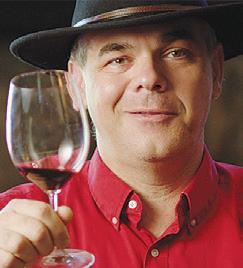
vanilla and cocoa finish makes this wine a wonderful pairing with this dish.

The 8% Cabernet Franc provides the gamey aspect to this wine that complements this dish while the acidity is crisp and cuts through the food. You can find this wine for under $65 per
James Dill’s from page 19
stickbait presented.
“It’s all about figuring out what retrieve the fish want,” he said. “Do you want it to sit three or four seconds and then snap the line to make it move, or do you want to let it sit 25 seconds?”
The suspending stickbait is most productive for Dill when he works it over large rocks, bluff ends, 45-degree banks or brush piles 6 to 18 feet deep.
Early and late winter are prime times for Dill to throw medium-diving crankbaits such as the Storm Lures Wiggle Wart and Spro RkCrawler in crawfish colors.
Dill throws the crankbaits on rocky banks and points where he retrieves the lure steadily with 12-pound fluorocarbon line. “The key deal is allowing it to hit the rocks and stir up the bottom to entice the fish,” he said.
The Missouri angler likes to crank his crawfish imitators on sunny, breezy days.
Dill admits he is not a big fan of the Alabama rig. “But it is a very effective tool,” he said. “It imitates a small school of shad that has broken away from a large school of shad. Sometimes a large school of shad can be intimidating to bass, so if you have a bait like the Alabama rig
bottle. Considering the time you spend working to harvest a deer, you deserve to treat yourself.
Visit WILD WINE LIFE on Facebook or Youtube for the video recipe versions and other wild game recipes. “LIKE” both Outdoor Guide and Wild Wine Life on Facebook

with five swimbaits, it looks like an easy target for bass.”
Dill sets up his rig with 3 1/2- to 4-inch swimbaits such as the Reaction Innovation Skinny Dipper or Zoom Swimmers in shad colors such as grayish blue with a dark back. He throws the rig on 50-pound braid line in stained water or 30-pound braid in clear water.
The rig can be retrieved down steep channel banks or over brush piles or pole timber 18 to 30 feet deep. Dill either lets the rig sink to the bottom before slowly retrieving it, or he will check his electronics to see how deep bass are and try to steadily retrieve the rig slightly above the fish.
Decorated evergreen trees in homes, offices, and stores are among the most conspicuous harbingers of the year-end holiday season. Favorites include spruces from Colorado, Douglas firs of the Northwest, or even Scotch pine trees.
But haunting the southern Ozarks are Missouri’s own evergreen echoes from a bygone era. It seems only fitting this time of year that we visit the ghost pines of Christmases past ... the shortleaf.
Shortleaf pines are the ShowMe state’s only true native pine trees. Some 100-150 years ago, the shortleaf reigned supreme in Missouri’s southern Ozarks. Shortleaf pine woodlands once dominated the region, thriving in the thin and often dry Ozark soils.
Their long and stately trunks, covered in thick, irregular, scaly bark, reached to the heavens by the thousands. Mostly trunk, with a very high crown of needle-laden branches, these coniferous giants towered 120
feet into the air. This was the northernmost reach of the great pine forests of the south.
The shortleaf ruled more than 6.6 million acres of Ozark forest for thousands of years before European settlers arrived. How many snow-covered Christmases might they have seen?
However, those magnificently long trunks are what ultimately brought the shortleaf’s dominance to an end.


By the mid-1800’s, lumber companies saw the potential of the long and straight shortleaf pines to create lumber, fence posts, utility poles and, most importantly, railroad ties.
As the growing U.S. expanded westward on steam locomotives in the late 1800s, ties hewn from Missouri’s shortleaf pines laid the tracks that made that expansion possible. They fueled the growth of the railroads and of our nation’s economy. It’s been said that Missouri pines paved the way west for a generation of Americans.
From 1880 to 1920, great mills were established in towns like Grandin, Winona, and

Birch Tree to cut and process shortleaf pines. Grandin Mill in Carter County, once the largest sawmill in Missouri and possibly the entire U.S., devoured 70 acres of forest per day.
In just 40 years of unrestrained logging, the great kingdom of the shortleaf pine was toppled, leaving only a ghostly memory of what once was. In the absence of the great pines,
oaks and hickories began to take over, changing the character of the land forever.
Echoes of these pines from the past exist still in the Missouri Ozarks, though. It’s estimated that 552,000 acres of shortleaf remain. The Missouri Department of Conservation, along with the U.S. Forest Service and


other entities, are working to restore shortleaf pine woodlands to the Ozarks. Shortleaf forests also support a unique suite of other plants and animals, which are likewise starting to make a comeback.





The hope is that new generations can know the great pines not as haunts of a bygone era, but rather inhabitants of the future, and appreciate them as
a continued part of our state’s natural history.
As we enjoy our festive holiday trees this winter season, it’s a good time to reflect on the heritage and significance of the state’s own native pine trees. Thanks to restoration efforts, the splendid shortleaf pines of our past will continue to grace Missouri Christmases yet to come.
WAYNESVILLE, MOToday 8:45 AM
YOUR

Gentle rivers full of twists and turns, spectacular Ozark scenery, and phenomenal fishing make for an adventurous getaway! But that only scratches the surface of all Pulaski County offers. Plan your trip through the heart of the Ozarks and fill up on tales as old as time at our historic military and Route 66 stops. Test your skills in archery, golf, indoor shooting, and more. Grab delicious eats and treats at our unique diners. en do it all again as you work your way through our day-a er-day adventures.
Plan your 2023 adventure through the heart of the Ozarks at pulaskicountyusa.com.
servation-related government agencies, universities and organizations that have made lasting contributions to the state’s fisheries, forestry, or wildlife resources.
The Missouri Department of Conservation (MDC) and Missouri Conservation Commission have honored Herschel Bledsoe, known as “Woody the Singing Forester” by inducting him into the Missouri Conservation Hall of Fame.
The honor was bestowed at the Commission’s Dec. 2 meeting in Jefferson City. Bledsoe, who lived in Jefferson City, died Nov. 11, 1991, at age 67. He was nominated by his son-in-law, Jim Dickson of Jefferson City.
Bledsoe was the 46th inductee into the Hall of Fame. The award honors citizen conservationists and former MDC employees, plus con-
To be eligible, an individual must have performed an outstanding act or demonstrated dedicated service resulting in major progress in conservation in Missouri. Nominations are screened by a diverse committee and its recommendations are presented to the Commission for consideration and final approval.
To learn more, go to mdc.mo.gov/about-us/ awards-honors/hall-fame.
Bledsoe joined MDC in 1942 as a towerman and firefighter. He served in Forestry Division and in 1951 was assigned to travel the state showing conservation films and lecturing on wildlife and forestry conservation. He would entertain his audiences
by playing his guitar and singing ballads to emphasize the conservation philosophy and movement in Missouri.
In 1953, Bledsoe formed a country music band with other MDC staff and produced a pilot radio show called “Woody and the Ozark Smoke Eaters,” MDC Director Sara Pauley Parker said.

“Although the show was high in entertainment content, Woody used it to preach the dangers of forest fires and to sell good wildlife and forestry practices,” she said. “The pilot show was presented to MDC administration, and they were so impressed they had him produce the show for use on about 25 radio
stations throughout the state as a public service. The show was an immediate success and evoked good responses from the public and radio stations. Thus, ‘Woody the Singing Forester’ was born.”
The show expanded into 26 annual episodes and ran on more than 40 radio stations for 20 years.
In 1954, Bledsoe was placed in charge of radio and television productions for MDC, and in 1957 became the voice of Smokey Bear in Missouri and began making hundreds of personal appearances with an animated Smokey at county fairs throughout the state. He also became a much sought-after speaker for civic organizations and sportsmen’s clubs and appeared at hundreds of school assembly programs.
In the early 1960s, Bledsoe began producing and hosting a 30-minute television show
I was fortunate to grow up on a family farm in the 1950s. I learned many lessons early in life that shaped my future. Doing daily chores like sweeping out the grain elevator and shoveling oats, wheat or navy beans into the “pit” where the grain was transferred upstairs into grain bins for storage. The first lesson was to work up to my dad’s expectations. If I fell short, there was no supper provided that evening! It only took one lesson to teach me. My father was neither mean nor cruel, but simply was very clear about what he expected of me. That lesson would shape my future and led to my graduation from Michigan State University with bachelor’s and master’s
degrees.
I student taught at St. Johns High School and was offered a teaching position, eventually retiring following 37 years of service.

There are two kinds of smart – book smart and hands-on smart. The book smart folks went to college while the hands-on smart folks excelled in various skilled trades. Both types of “smart” are more important now than ever.
I taught two classes of hands-on smart students. I discovered early as a teacher that one needed to meet each student where they were at in order to move them ahead.
A student asked me, “Hey Uncle Bob, can we have a
wild game feed if we all get our school work in?”
“You bet,” was my reply.
The students taught me a very important lesson. Instead of prodding the class to get work in, I had the students who finished their work early help those who lagged behind. The classroom became a dynamic hands-on experience – for me.
The day of the wild game meal arrived, and I had reserved the home economics room. The students brought venison, rabbit, squirrel and pheasant. Suddenly my principal arrived and asked, “How in the hell can you justify this? I want to see you in my office after school!”
I replied, “Real easy, look
over there at that table. See the boy eating off the other student’s plate. He didn’t have breakfast this morning and can’t afford to buy a school lunch!”
The principal left the home economics room very angry. After school, I went to his office.
“You wanted to see me,” I said.
“Not anymore,” he replied. “I don’t know what the hell you do to motivate those losers. Just keep on doing it.”
“Shame on you!” I answered. “Every student deserves to have an equal opportunity to a good education. To focus only on the book-smart kids whose parents own businesses in town is wrong!”
Another lesson learned from my students!
for MDC called “Missouri Outdoors.” The popular show aired until 2007; episodes are still available online.

“Woody’s radio show, TV show, exhibits and publications won 20 international awards from the Association for Conservation Information,” Pauley said. “This association is comprised of information and education sections of state, federal and provincial conservation agencies throughout the U.S. and Canada. These are prestigious awards, and Woody’s productions placed first, second and third consistently, which not only reflects well on his ability, but was a contributing factor in making the Missouri Department of Conservation recognized as one of the best in the nation.”
For a look at one of Bledsoe’s “Singing Forester” programs circa 1960, go online to youtube.com/ watch?v=uQpq9wUUZAc
‘Singing Forester’ honored posthumously for promoting conservationHerschel Bledsoe, at right, performs in 1960 with other musicians as ‘Woody the Singing Forester.’
Bowhunting the wily, mystical whitetail deer of my ancestral Michigan marshlands sure keeps a guy on his predator toes. Following the greatest “Detroit Muscle” rock-n-roll tour of my life, I needed the soul cleansing healing powers of nature more than ever, and total escape was mine with my first step from the stage into my sacred deer grounds.
Swapping my Gibson Byrdland guitar for my Mathews bow immediately calmed me like a swoosh of medicinal mist deep into my soul, and the joy and fiery energy of my musical dreams morphed seamlessly into the Spirit of the Wild, straight from the hand of God.
I hunted hard, non-stop, day in and day out starting in early September, and my arrows were flying true and the sacred venison flowed like manna from heaven. With 73 deer seasons under my belt, it almost seemed like I had zeroed in on the mysticism of deer life, and I was almost feeling a bit cocky.
But no matter what the lessons learned and strategies honed, all hunters know all too well that right place right time is the guiding reality of backstrap dreams, and I was batting a pretty decent percentage considering.
With my new knees and 74-year-old body, I make it a point to go a little slower and focus on my stealth and sneakiness on the way to my chosen stand these days, and quite honestly, when hunting, slower is always better.
With the vidcam bag and backpack slung over my left shoulder, a small bag of deer chow in my left hand and my Mathews in my right hand, I carefully tiptoed through the forest and the mucky marsh on my way to the big hogback ridge where my ladder stand awaited me.
Lo and behold, as I carefully eased up over the final ridgeline, there he was, a
fat, butterball forkhorn buck contently gobbling up some of the big white oak acorns on the other side, just about 35 yards below.
As my eyes connected with him, his head jerked up and he stared a hole clean through me.
Fortunately, two heavy trunked tulip-popple trees formed a large V right at my eye level, and, holding statue-still, I was able to win the staredown.
Ever so carefully, I eased to the right of the tree-trunk V, came to full draw, and sent one of the prettiest arrows of my life straight down the slope right into the crease behind the buck’s shoulder, and it was all over but for the barbeque!
The 400 grain GoldTip arrow zinged downrange at about 225 feet per second from my light, 50-pound draw Mathews, and with the razor sharp, two blade broadhead, sliced clean through the 150-pound deer like a hot knife through soft butter.



The buck leapt, tail up, raced for 50 yards, spun around once and hit the ground dead in mere seconds.
Oh, what a feeling! Surely, I get a supreme kick whenever I put a good arrow on a deer, but when still hunting on the ground right there with the animal, one’s predator senses are at an all-time high, and the sense of accomplishment is accentuated like none other in the hunting world.
I for one will always hunt my way to my stand. For one never knows what lies ahead, step for step, move for move, in the always exciting, stimulating and challenging world of the mighty whitetail deer.
Isn’t it time you built your own boat? Rapid Whale offers plans, parts and support for a range of boats such as this 6-foot electric mini-boat.
“This boat is ridiculously small and a blast to ride,” says designer and engineer Josh Tulberg “It’s also simple to build with its cable-tie and epoxy constructrion.”
It’s designed to last a lifetime and made to order from marine-grade plywood, incorporating internal bulkheads that provide floatation even when flooded.
It can be stored in a closet, squeezed through a door and slid into a hatchback. It comes with a steering wheel, steering shaft bearings and gaskets. The completed boat is 31 inches wide and 24 inches tall, weighing 67 pounds.

Kits are $950 with instructions plus $150 shipping in the 48 states. Components that don’t come with it will cost another $500 to $1,250. Go on-line to rapidwhale.com.mini-boat.php.
The original titanium grill is the Woodsman Ultralight Titanium Bushcraft Grill, made by Arcadia Gear for open-fire cooking on the beach, in the woods or anywhere you want. It measures 10” by 6.5” with no assembly required.
At only 4.16 ounces, it is one of the lightest cooking systems in the world but able to withstand temperatures of up to 3,000 degrees Fahrenheit, It cannot rust or corrode and requires no special care – leave it out in the rain if you want to.
The surface is sand-blasted into a smooth finish, with no coatings or chemicals applied.
The Woodsman Ultralight Titanium Bushcraft Grill sells for $34.95 at Amazon.com.
Known the world over and now available in the U.S., the leader in thermal scopes, iAiming introduces the Model 612 Gamechanger, an accumulation of years of research and development, engineering ingenuity and design, creating the pinnacle of thermal scopes.

Available throughout the product line, the globally patented “First Shot-Auto Zero” technology allows the shooter to sightin a firearm with ease, saving time and ammo.
The artificial intelligence design, with its single scroll-knob to control the scope, makes it the easiest thermal scope to operate. Video resolution is 1024 by 768, and continuous digital zoom is 2.4x/19.2x. It is lightweight and comes with lifetime customer support at firearm and sporting goods stores nationwide.
The iAiming Model 612 is priced at between $5,130 and $5,999 at various dealers online including Sunburyfirearms. com and tactical-life.com. For more information go to www. iaiming.com.
The Safari Store is offering a wide range of highly capable outdoor hats online at thesafaristore.com including this one called the Men’s Explorer Canvas Safari Hart, done up in Meerkat – made of canvas, not endangered species.
It comes with an aerated mesh design and a braided leather band, with a 360-degree wide brim, made of water-resistant canvas and packable.
You never know when you’re going to need a sofa. Maybe in the campground.
Black Sierra has a camping sofa made just for those occasions. It’s made with durable polyester fabric with a padded backrest, adjustable tension straps and two mesh cupholders.
The sofa is 57 inches wide, 20 inches deep and 33 inches high. It frame is heavy duty, powder-coated steel that will support up to 500 pounds, even though the sofa itself weighs only 13.8 pounds.
It comes with a sturdy carry bag and strap, handy for camping, hiking or on the sidelines. And it’s easy to set up and take down with quick-folding capability.
The Black Sierra camping sofa sells for $129.99 at Amazon.com.

Bird feeders and their feathered friends high-quality feeder made of Western red cedar and sold by fifthroom.com as part of its full line of cedar products for yards.
This feeder is made with zinc-plated steel hardware, has rounded and sanded edges, and staining as an available option.
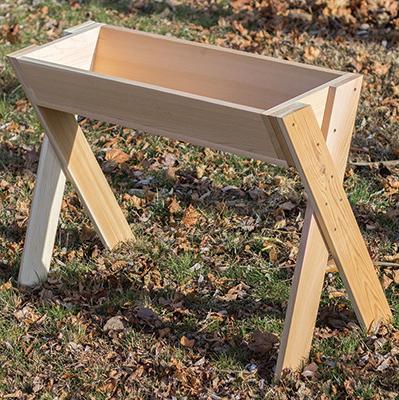
The feeder is American-made and weighs 25 pounds, at 24 inches long by 12 inches in diameter and 30 inches high. Shipping is free and assembly takes 10 minutes or less. Cedar stain and stainless steel screws are extra-cost options.
Other cedar products include a garden bench, an arbor and a two sizes of picket rail bridges.
The Red Cedar Deer Feeder is available for $339 at fifthroom.com.
The unisex hat has an internal drawstring and a detachable leather chin strap, so it never has to fall off.
The adjustable-size hat comes in sizes of small-medium, large-extra large, or even XXL for the biggest of heads. It weighs 200 grams.
The Meerkat safari hat sells for $58 at the safaristore.com.

Mossberg has added optic-ready versions of the 500 and 835 Ulti-Mag pump actions to its line of turkey shotguns, featuring receiver cuts for low-profile, direct mounting of microdot sights and fully camouflaged in the Mossy Oak Greenleaf pattern.

The 500 Turkey Optic-Ready is available in 410 bore and 20 gauge, and the 835 Ulti-Mag Turkey Optic-Ready is a 12 gauge, 3.5-inch platform.
Design features include non-binding twin action bars, dual extractors, a positive steel-to-steel lock-up, anti-jam elevators, anodized aluminum receivers, and top-mounted safety.
The guns come with extended choke tubes, fiber optics, drilled and tapped receiver for added versatility, sling swivel studs, 5+1 shell capacity and cover plates for when a mounted optic is not used.
The Greenleaf pattern offers silhouette concealment with its blend of dirt, bark, moss and oak sapling elements.

These guns can be seen at the www.mossberg.com website. Suggested retail prices range from $644 to $693.
If you’ve ever faced the question, “Where do we put the cat?” there may be an answer in the Tiny Tent Basecamp Dome Tent, a geodesic dome-shaped enclosure with, relatively, steep walls and a high ceiling to maximize kitty comfort and security.
The Tiny Tent comes with mesh windows and door for ventilation and a tarpaulin floor for durability. It measures 23 inches by 23 inches and 15 inches high and weighs about a pound.

In bright orange, it’s held together by ultralight poles with elastic connections.
So next time, you don’t have to leave Mr. Whiskers at home!
The Tiny Tent Basecamp Dome Tent sells for $39.95 at REI.com.

Mossberg has added the Hornady Precision Rifle Cartridge, at 7mm PRC, to its series of Patriot Predator bolt-action rifles.
Designed to outperform existing 7mm cartridges in a standard long-action rifle, the 7mm PRC is a match-grade cartridge that delivers consistent velocity and repeatable accuracy.
It is a match for Mossberg’s purpose-built, suppressor-ready Patriot Predator platform. Two synthetic-stocked models are available with 24-inch barrel length and 1:8 twist rate to maximize performance of the PRC cartridge.
For optics, the Predator is equipped with a receiver-mounted Picatinny rail.
Prices range from $519 to $616. For more information, go to www.mossberg.com.

Black Sierra has a camping sofa that can be carried, folded
Safari Store has the jungle hat you just might need
its
The outdoors are big business. The Bureau of Economic Analysis (BEA), which is part of the U.S. Department of Commerce, released outdoor recreation economic data for 2021 that shows outdoor recreation was responsible for $862 billion in economic output and 4.5 million jobs. This was 1.9 percent of our nation’s gross domestic product (GDP).
Covid’s impact on outdoor recreation was huge. It gave enthusiasts more opportunity to spend time outdoors, but it also drove people who rarely ventured outdoors into new sports and pastimes. Record sales were recorded in many outdoor segments. Travel restrictions taught us to look for opportunities to recreate closer to home.
Now we’re back to hitting the road, and lots of people are eager to visit destinations where they can participate in their newfound activities.
“Last year proved to be a year like no other for the outdoor recreation industry, and today’s Outdoor Recreation Satellite Account data release underscores the fact that boating and time spent on our nation’s waterways is a favorite American pastime,” said Frank Hugelmeyer, president of the National Marine Manufacturers Association.

“Since 2020, the recreational boating and fishing industry and outdoor recreation economy at-large has led a national recovery, welcoming millions of families to experience the considerable health benefits of the great outdoors while being a vital economic contributor
and job creator.”
Sportsmen can be guilty of staying in our silos of hunting and fishing. We may not think of how broad the outdoor recreation industry is. Boating isn’t just for catching fish. All those ski boats and pontoon boats are making an impact on the economy. So don’t get too mad when they come blowing by while you’re fishing a brush pile. Hopefully, they’ll give you some space. When it comes to funding conservation, we really are all in it together.



“We have seen record growth in camping and boating over the past couple years, with millions of people enjoying RVs and boats to connect with family and friends, to relax and recharge, and to experience nature,” said Michael Happe, CEO of Winnebago Industries.
“The record economic impact in the BEA numbers demonstrates the collective power of our industry to help people discover and experience the tremendous benefits of the outdoor lifestyle. We continue to welcome an increasingly diverse group of new participants, so we look forward to maintaining this momentum by developing recreation infrastructure and increasing access for all.”
Camping is where my love of the outdoors originated. We always had a camper while I was growing up. Potato Creek, Tippecanoe and Turkey Run state parks in Indiana are the wild places where my love of
wildlife sprouted. We’d spend hours on bikes, riding trails and looking for deer. Going camping is generally tied to other outdoor activities.
“The continued strength of the outdoor economy is no surprise to the marine industry, where we continue to see incredible growth with new and younger customers taking to our brands each year,” said Chris Drees, president of Mercury Marine, the world’s leading manufacturer of rec-




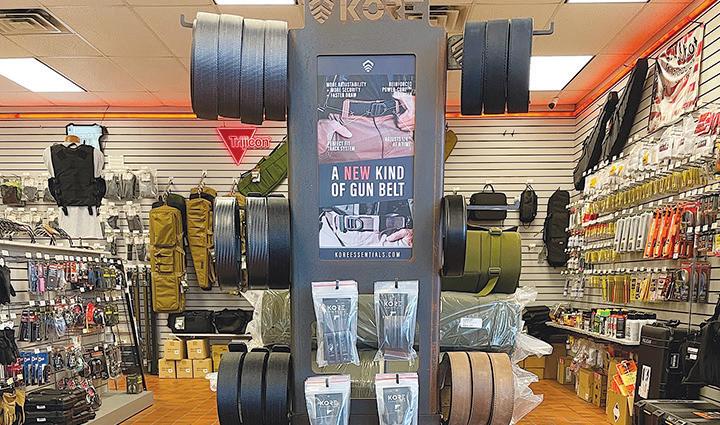



reational marine propulsion engines. “We will continue to work closely with our partners in the outdoor recreational community to promote the benefits of being on the water.”
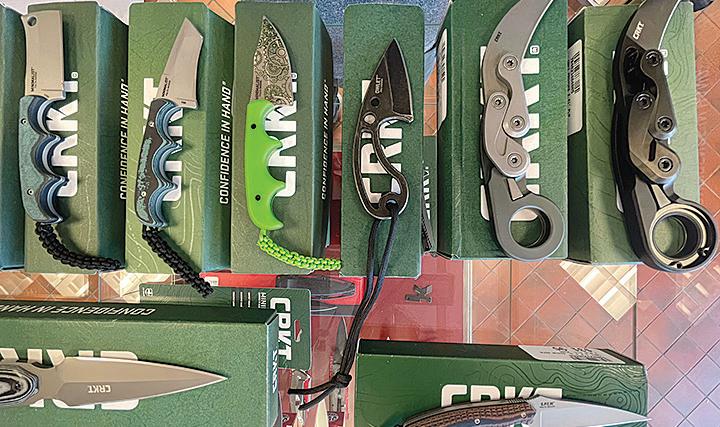
Through social media, we’re all able to share stories and provide others with inspiration to go outside. We can educate and inform friends and followers of special places and new ways to experience nature. Outdoor media plays a role in spreading the word
of opportunities.
“Our members, which include more than 600 outdoor media across the country, saw an explosion of interest in outdoor activities over the past few years – including expanded coverage by mass media in outdoor recreation,” said Katie McKalip, president of the Outdoor Writers Association of America. “It’s been excellent to be able to reach even more people to inspire them to get outdoors – and
ultimately help conserve our precious outdoor spaces.”
The great outdoors are open for business. Whether you’re a hunter, angler, bird watcher or boater, you’re lucky to live in this country where our special brand of freedom allows us to enjoy our public lands and waters.
For more Driftwood Outdoors, check out the podcast on www.driftwoodoutdoors. com or anywhere podcasts are streamed.
















 By TIM HUFFMAN
By TIM HUFFMAN

Fishermen love using “secret” colors – the perfect colors that catch more fish than colors used by other fishermen. There are situations when crappie can’t resist a certain color or, more likely, a color combination, while they snub their noses at other colors.
There are times when a big crappie wants a different color than most other fish. Multiple pole fishing is the best way to see the difference, especially after fishing for several hours with a variety of baits in the water.
It’s important to note that colors can make a difference in the number of fish caught. But sometimes a fish will hit any color because you put the bait in front of a hungry fish. So where you drop your jig is the most important factor. The color is important when fish are neutral or negative, which is most of the time.
The rule of thumb is to use dark colors in dark conditions and bright colors in bright conditions. Dark conditions include dark or stained water, dawn, dusk, cloudy skies, and night. A dark color is easier for a fish to see because, when it looks up, a darker jig creates a better outline than a light-colored jig. It’s probably more about a crappie seeing the jig than the actual jig color.
good to have an assortment of jig colors. The first row of jigs are natural and lighter colors, the middle row are medium shades and the last row are darker colors.
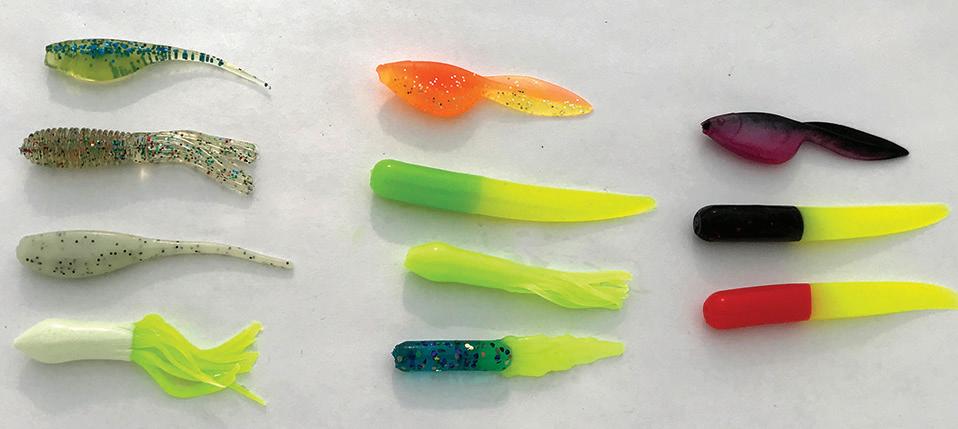
bait is too clear, we can’t see it. If it’s too dark, it doesn’t look real. You must find the right color for the clarity and light so that the bait looks right to the fish.”
Summary: Use dark colors in dark conditions. Use light colors in light conditions.
or black. Use opaque colors that block light and create a bait shadow fish can see in dark water. Dark conditions are usually stained water, overcast sky, before sunrise and after sunset.”
“It’s opposite in clear water. A semi-transparent bait, like Monkey Milk, will work in most clearer waters and often in stained waters. It’s a more natural-looking bait because of the color and having some light going through it.”
Summary: Opaque colors in dark water, semi-transparent in clear.
color. It works in most lakes and is especially important in clear to lightly stained waters. A shad body in Monkey Milk accounts for a lot of crappie every year. Other good light colors include light blue/white, white/chartreuse, and pink/white.
Natural colors can also include pumpkinseed-colored baits. They are good around vegetation including grass, weeds, and lily pads. Using a bright or an extremely dark color can spook the crappie.
A clear jig with flecks is a great choice for clear water. Subtle colors look realistic to get more bites than bold bright or dark colors.
“Colors can be complicated,” said Doyle Hudson, owner of MidSouth Tackle. “The darker the water, like near bottom, the darker jig you need. It would be like us holding a jig up and looking at it in the moonlight. If the


Light colors are good in clear water or in stained waters during bright sunlight. A crappie can see a jig in clear water, so shape and color are critical. Whites, shad, pinks, light blue, and other softer colors are usually best.
Slight to moderate stained waters have enough light penetration that bright and mid-range colors work well. Bright conditions mean bright sunlight.
Ron Stallings has been associated with baits all his life. He grew up working at his father’s bait shop. He has decades working with foreign markets, designing and marketing with TTI-Blakemore, the RoadRunner company, and colors are a critical part of his business.
“Catching fish is about colors, but it’s also about passing or blocking light,” he said. “In dark waters, it’s best to use a dark color like Junebug
Chartreuse is on everyone’s list. Since nothing in the lake is chartreuse color, it proves that getting a bite can be more about seeing a bait than looking natural.
Chartreuse is the number one color, and it can be opaque, glow or transparent. Black-chartreuse is a popular color anywhere in the country and will catch fish in most waters.
Monkey milk is a milky, sparkly bait that’s a great
Experts agree that very dingy or muddy water needs glow colors in orange, black, yellow, and chartreuse. These colors help draw attention to a bait in low-visibility waters. A black/chartreuse body with an orange head is a color combination to try.
A good all-around bait for many waters is green/ chartreuse glow. The color is an attention-getter without spooking the fish.
Summary: Having a good variety of colors is important. Use the proper color for conditions but switch as

could not help but ponder the thought of how fortunate I am to live so close to one of the few remaining free-flowing rivers in the Ozarks.”
– Bill Cooper Photos and Text By BILL COOPERThe old adage about being a fair weather fisherman came to mind as I slid my fishing kayak into the snowy-cold waters of the upper Meramec River. Apparently the phrase applies to canoers and kayakers as well, because I enjoyed the river in complete solitude.


Predicted afternoon temperatures approaching 60 degrees became more than I could stand for the second week of that February. I had been cooped up in the house far too long with a foot problem and then covid on top of that. Taking a float fishing trip for the day seemed like the perfect cure for cabin fever.
Much of the foot of snow that had fallen a few days previously still blanketed the Ozark hills along the river, creating a virtual winter wonderland of gorgeous scenery.
My kayak slid into the icy water easily, with the aid of a band of ice that framed the river bank like a sparkling blanket.
As soon as I floated around the first bend, out of sight of the access point, I felt I had entered an enchanted world of quiet and solitude. The towering hillsides and bluffs popped from the covering of snow and brilliant blue skies. I inhaled a deep breath of cold, crisp air and vowed to enjoy a day of pure relaxation on the river.
I drifted along with little effort, only occasionally hitting a paddle stroke or two to avoid bumping a rock. The water had been rather skinny below the Highway 8 access on the Meramec River all of fall. With a recent rain and melting snow, the river ran a little higher, making floating a little less troublesome.
Sipping a cup of steaming hot coffee as I floated peacefully along, I looked up to see the shining white head of a mature bald eagle soaring straight at me. The bird’s wingspan seemed enormous as it sailed overhead on silent wings, seemingly oblivious to my presence. However, I knew full well that the eagle had me spotted with its incredible eyesight.
I could not help but ponder the thought of how fortunate
I am to live so close to one of the few remaining free-flowing rivers in the Ozarks. My first few minutes of the trip proved the importance of these rivers and their value to the human spirit. After having been ill for weeks, I felt totally alive and energized once again.
I caught movement in the underbrush. I quickly recognized the brown hide of a whitetail deer. It had spotted me, and out of pure curiosity began slowly slinking its way closer for a good look at the strange creature
drifting down the river. It slowly made its way to the edge of the riverbank, perhaps 10 feet above me. I could see the deer’s dark, twinkling eyes as it stared down at me.
The magical moment lasted only a few seconds before the doe’s twitching nose caught my scent. She bounded gracefully through the bottomland woods to put immediate distance between us. When she broke to run, two more deer, which I had not seen, trotted along behind the first.
I enjoyed the process of making mental notes of the wildlife I encountered along the way. I fully expected to see a flock of wild turkeys along this stretch of river. I had recently been seeing the largest flock of wild turkeys I have seen in a couple of decades in this area. But on this day, none materialized.
As I rounded the bend where Maramec Spring Branch enters the Meramec River, a pair of bald eagles launched from their perches high in an ancient sycamore along the river bank. These spectacular skeleton-looking trees have been around since before the dinosaurs. Every time I see a sycamore, I imagine a towering brontosaurus nibbling leaves from the branches.
I began tossing a favorite jig that I tied just below the juncture
of the spring branch and river. I use a crappie jig head and adorn it with the reddish-orange hair from a fox squirrel tail. I add a bit of raccoon hair behind the head to create the effect of a collar. The jig imitates a sculpin, a favorite food of river trout.
I had picked up a few brown trout, most of which were from 8 to 10 inches in length. I had hoped for a 15-incher. It would have made the perfect shore lunch. However, I had prepared just in case I failed to catch lunch.
I pulled over on a gravel bar and quickly cooked up steak fajitas, my favorite gravel bar meal. The hot meat and veggies, topped with cheese and sour cream and wrapped in a soft tortilla, never tasted better. I sat in a comfortable camp chair, ate lunch and watched the river flow.
The Missouri Department of Conservation has set turkey and deer hunting dates and made regulation changes for the 2023-2024 seasons, including a new firearms early antlerless portion, a new firearms CWD portion, and changes to firearms antlerless permit numbers in most counties.
“The changes to deer hunting regulations for the 2023-2024 deer season were motivated by increasing deer numbers throughout much of Missouri and in response to changes in the distribution of chronic wasting disease in the state,” Cervid Program Supervisor Jason Isabelle said.
“With a growing deer population in most Missouri counties, we’re increasing opportunities for hunters to harvest deer both within and outside of the CWD Management Zone next year,” he said.
TURKEY HUNTING
Spring and fall 2023 dates include:
• Spring Youth Portion, April 1-2.
• Spring Turkey Season, April 17-May 7.
• Fall Firearms Turkey Season, Oct. 1-31.
• Firearms Early Antlerless Portion: Oct. 6-8 (in open counties)
• Firearms Early Youth Portion: Oct. 28-29
• Firearms November Portion: Nov. 11-21
firearms late antlerless portion Dec. 2-10. Get regulation details and a map of open counties from the MDC website.
.
• Firearms CWD Portion: Nov. 22-26 (in open counties)
• Firearms Late Youth Portion: Nov. 24-26
• Firearms Late Antlerless Portion: Dec. 2-10 (in open counties)
• Firearms Alternative Methods Portion: Dec. 23 - Jan. 2, 2024
MDC will offer a new firearms early antlerless portion Oct. 6-8 for 2023 in the same 100 counties open for the
“With deer populations being at desired levels in most counties but continuing to increase, additional antlerless harvest is needed to stabilize deer numbers,” Isabelle said. “The creation of an early antlerless portion of firearms deer season and increasing the availability of antlerless permits in most counties will provide hunters with more opportunities to harvest antlerless deer and help meet our deer-management goals.”
Firearms antlerless seasons that occur prior to the primary firearms season are not uncommon, and several Midwestern states have established similar season portions.
“The early antlerless portion will help to increase antlerless deer harvest prior to the November portion of firearms season when the focus of many hunters is on harvesting a buck,” Isabelle said. “The timing of the early antlerless
portion was designed to occur when weather conditions are generally comfortable and during a time that will minimize conflict with archery hunters, who spend the most time hunting during late October and early November as the rut approaches.”
MDC will offer a CWD portion of firearms deer season Nov. 22-26 in CWD Management Zone counties during the 2023-2024 deer season. Get regulation details and a map of open counties from the MDC website at mdc.mo.gov/ hunting-trapping/species/ deer/regulation-changes-2023-24-deer-season
Hunters will be able to use any unfilled firearms deer permits during the CWD portion and must abide by the statewide limit of one antlered deer during that season, all portions combined. They must also abide by county-specific firearms antlerless permit numbers.
“Like they are in most of the state, deer populations are increasing in most CWD Management Zone counties,” Isabelle said. “Because higher deer densities can increase the rate of CWD spread, additional deer harvest in the CWD Management Zone is needed to prevent further increases in deer numbers and help minimize the spread of the disease.”
The timeframe of the CWD portion was selected because it occurs at the end of the primary rut, or breeding season, when deer activity is typically high and when hunter interest remains strong.
“The late November timeframe avoids peak archery hunting weeks and occurs during a time when deer movement is generally good and when hunters are eager to be in the woods,” Isabelle said.
MDC has also increased the number of firearms antlerless permits that hunters can fill in most counties, including allow-
ing hunters to fill a firearms antlerless permit in Butler, Carter, Scott or Wayne counties. MDC has also increased the number of firearms antlerless permits from two to four in 82 counties.
The deer population has steadily increased in the past decade, necessitating the liberalization of antlerless harvest opportunities to slow population growth and keep the deer population at desired levels.
Get regulation details and a list and map of allowed antlerless permit numbers by county from the MDC website at mdc.mo.gov/ hunting-trapping/species/ deer/regulation-changes-2023-24-deer-season
Detailed information on the new firearms early antlerless portion, the new firearms CWD portion, and changes to firearms antlerless permit numbers by county will also be included in the MDC 2023 Fall Deer & Turkey Regulations and Information booklet, available starting in July where permits are sold and online at mdc.mo.gov
“IFloating in the winter provides participants a dose of solitude and fresh air. Trout fishing is an added bonus of floating on the Meramec River in cold-weather months.
Max Mongrello is a 25-year-old Georgia native working to make his way in the Midwestern whitetail world. He makes his living behind a camera, filming hunts. His company, Maximum Exposure Productions, has worked for operations such as Midwest Whitetail and Operation Impact 22, which takes disabled veterans on the hunt of a lifetime.
“They hunt for three or four days and get to see what Iowa whitetail hunting is all about,” Mongrello said. “Many of these veterans are struggling mentally, and this experience is a huge pick-me-up. So not only do we want them to leave with a trophy buck, but also some helpful advice from guys who have been through it. It’s an unbelievably rewarding thing to be a part of.”
When he’s not behind the camera, Mongrello spends his time working to punch his tags on trophy bucks. He did just that on Nov. 26 in Iowa County when he arrowed a 13-point giant that scored 170 7/8.

“I got on this farm last year for a time and had an encounter with him right away,” he said. “My partner would have shot him, but he was on the wrong side of the fence. We watched him walk by us only 6 yards away.”
The buck had showed up on camera just once in the summer, then in October he moved back into the area and
was there until the end.
“At this point, does have transitioned heavily back to food,” Mongrello said. “They’re hammering cut corn and beans. He came out following a group of four or five does. There were 40 does in the field and he pin-pointed one. And a few little bucks were on her too. When he came in range, I made the shot.”
The number of bucks roaming the Midwest has decreased since many firearms seasons have come and gone. For example, Missouri hunters put the hurt on bucks. MDC reported 197,724 deer killed during the November portion of firearms deer season, Nov. 12-22. Of those, 102,633 were antlered bucks, 16,929 were button bucks, and 78,162 were does.
There still are opportunities to wrap your tag on a Midwestern giant – the season runs through Jan. 15 – but doing so will likely require adjusting your strategy from thinking anything can happen during the rut, to focusing on travel patterns between feeding and bedding locations.
At this point, the vast majority of does are past estrous. A few does are coming into it now, especially younger ones. Bucks are still seeking out any last remaining breeding opportunities, but for the most part, it’s time to start focusing on bed-to-feed patterns.
If you’re still holding an unfilled buck tag, you and the monster you’re after probably look similar by now. Kind

from page 27 necessary.

Every lake has a best color, something that seems to catch more fish than anything else.
For example, crappie in Truman Lake like junebug-chartreuse. Other colors may work better on a particular day, but the primary color is a good goto color. Fishermen will be using an orange-chartreuse at Kentucky Lake while Florida fishermen will be using greens. Try the lake favorite but adjust colors as necessary.
Color options are endless with every color having a situation when it will work.

Classic Champ Travis Bunting, owner of Muddy Water Baits, says, “Different colors are important. However, a fisherman needs to have confidence in the color he is using, especially when fishing gets tough. He must believe the color will work. If not, he will be changing colors and worrying about baits more then getting a jig into the right spot with a good presentation.”
Tim Huffman has written for Outdoor Guide for over three decades. His 2022 book, Crappie Annual & Product Guide, is available from Grizzly Jig Company at 800-305-9866, Amazon.com or MonsterCrappie.com.
of haggard, worn down, out of breath and ready for the madness to end.
If you’re not wasting time, meaning you’re out there all day but haven’t filled a tag, then you have to be running on fumes. But don’t give up. Bucks are still out there, and they’re coming to food sources regularly.
For more of Driftwood Outdoors, check out the podcast at www.driftwoodoutdoors.com or anywhere podcasts are streamed.
BACK TO SCHOOL – Ben Braun of Waterloo, Ill., managed one more fishing trip just before the school year started and it paid off for Ben when he caught this monster on a crankbait he borrowed from his dad Justin.





bring home a pile of discarded whitetail deer antlers.
Today we are going to discuss one of the fastest growing topics in the Midwest in the hunting field. Looking for, finding and collecting shed antlers has become one of the most popular activities among not only hunters but all segments of the population.

Lots of folks are now spending late-winter days looking to
There seems to be no limit to the uses for these shed antlers. The creativity of some of these decorative pieces is truly amazing. I have seen them made into everything from centerpieces to lamps to door handles. Others just like to pile them up and make their piles bigger each year. Either way, the mice and squirrels are getting fewer and fewer antler treats each season.
In the past, the only sheds I collected were ones I accidentally stumbled over while turkey and mushroom hunting.
I have a modest collection of various sizes. I also have other items in my collection such as skulls, and skulls with the antlers still attached.
There are lots of surprising things to find on the forest floor if you are looking for them on purpose. I realized this recently when I participated in my first organized shed hunt.
I spent several days last fall hunting with some great new friends, Luke Terstriep, Sr., Luke Jr. and younger brother Lance. We had some outstanding hunts, and we are already gearing up for spring turkey season. Recently, Luke Jr. and Lance called and invited me to go with them to look for sheds on one of their properties. I happily accepted.
I figured shed hunting was nothing more than “bailing out and milling around,” looking for antlers on the ground. These guys had a plan, and they were organized and wanted to systematically cover the farm. They intended to cover every square yard of the property.
Their plan was based mostly on data they had already collected about buck activity since the last deer season ended. Trail cameras showed a large number

of bucks using a particular food plot during the big snow in early February. They also found dozens of beds in the snow while coyotes were hunting the farm. The brothers had a really good idea of where the sheds might be, and the plan was to cover the area in a grid so as not to miss anything.
Luke drew first blood and got us on the board with a small three-point antler. As we moved down the hill. I was between the two Terstrieps. By the time we hit the field edge, Luke had found three more sheds, including the match to the first find.
As we emerged from the timber, I was walking north when Luke yelled out about his find. I turned to walk toward him. Lance was behind me and laughed as he picked up an antler just a few steps from where I had been.
“You would have stepped on this one if you had not turned around,” he said as he raised the shed to show me.
That’s my luck.
Luke told me about something interesting he had found the day before when they were shed hunting another of their properties. He saw a number of tine points sticking
up from a field and thought he had found a huge non-typical antler. It turned out to be a pair of rattling antlers attached by a small nylon cord. This farm had been leased to an outfitter last season, and these were obviously dropped by a hunter. It was a very unusual find for a shed hunter.
By the end of the day the Terstrieps had found 18 nice sheds and a whole bobcat skull.
I, on the other hand, had found two vertebrae, two leg bones and a doe skull. Twice I walked away from spots where Lance stepped in and found a shed. It just was not my day.
To add salt to this little wound, Luke and I took a walk
on one of my properties a week later. Not only did Luke find a great shed, but it was still hooked to the skull – which was still hooked to the carcass. The buck had gotten his rack caught on the tree and could not get free. There he died, and there Luke found him.
But I had a great time, and I learned a lot about this growing sport. These guys, along with their father, Luke Sr. have a barrel full of sheds in their basement. Maybe my turn to find some sheds will come during turkey season when I am watching the ground for mushrooms.
See Mike Roux Outdoor Enterprises on Facebook.
As humans watch their protein sources dwindle from both land and sea, their eyes turn upward to the chatter in a tree. That’s where they can behold their future dinner with “chicken of the trees.” We’re talking: Squirrel!
We can argue until the cows come home on what’s causing the climate to change, but the facts are that farmland droughts and rising ocean temperatures are threatening prized fare for our dining room tables.
Alaskan crab leg enthusiasts are already moaning. Alaska made history this year by cancelling most of the crab harvest due to stark declines in the crab population.
Warmer waters are cramping the crab critters’ style. Crab leg lovers want to know what to do with all those seafood crackers crammed in kitchen cabinets. Seafood junkies must recognize the tide is turning.
Adapt or die. It’s as simple as
that. Forget all the crabbing and realize the time is nigh for the dinner table to boast hot bowls of booyah, burgoo, or Brunswick stew – all made with squirrel. This was respectable food fare a century ago, so let’s bring back a little culinary tradition.
Squirrels seem oblivious to all the debate about temperature changes. Ancient squirrel-like characters have been around for 200 million years. They’ve seen it all. Squirrels that we recognize today are 36 million years old. They were here long before us, they’ll be here long after us. In this interval of time that we share the Earth together, let’s eat ‘em. This is not the idea of some faux Daniel Boone sporting a souvenir coonskin cap; it’s the recommendation of Project Squirrel at the University of Illinois at Chicago.
Project Squirrel eyes an inexhaustible supply of protein.
Squirrels are so prolific that 80 percent of their population could be harvested annually without putting a dent in their num-
bers. While the Earth’s cattle inventory declines and seafood creatures’crater, the dependable
squirrel abides. Squirrels are a sustainable source of food. They require

much less energy and attention than cattle, and that’s no bull. Can we just stop asking where’s the beef, and start declaring: Why not squirrel?
One reason squirrels simply disappeared as a kitchen staple is that hunters quit hunting them. There’s more fun in taking down bigger game – scoring big with whitetail bucks, feral hogs or gobbling turkeys. Small game has lost its charm and small game hunters are now on the endangered species list. Let’s bring them back
The way to bring them back is to appeal to their national loyalty. Hunters need to know that it’s a darned patriotic duty to bag a squirrel; to bake or fry the little miscreant; and, to restore America’s taste for squirrel. It’s also patriotic to honor the role of the squirrel in our nation’s noble past.
Squirrels provided great training for the Colonial fighters in America’s War of Independence. Legend has it that the Revolutionary warriors were
crack shots from all their squirrel hunting and thus were excellent marksmen against the far larger British Redcoats.
The Redcoats gave up and sailed back to England 250 years ago after trying to quash a revolution, but the squirrels are still here. High-profile hunter and hard rock musician Ted Nugent says the best way to recognize the squirrels’ great sacrifice for our history is — to keep on sacrificing them.
Nugent has been on a mission to bring back the guts and glory of chowing down on nutty squirrel meat. That can only happen if the crabbing stops over what’s happening in the seas and we start to champion the “chicken of the trees.”
Anyone for Louisiana Creole Squirrel? How about New England Squirrel Pie? Better yet, let’s get down and dirty with some Trash Broiled Squirrel! Nugent’s recipes for post-colonial squirrel casseroles can be found in his patriotic recipe book, “Kill It & Grill It.”
Author and two brothers find a latewinter way to huntLuke and Lance Terstriep with a nice day’s find from hunting season’s leftovers. SPONSORED COLUMN SPONSORED COLUMN The author managed to find these beauties just outside Columbia, Mo. – Nancy Roux photo













